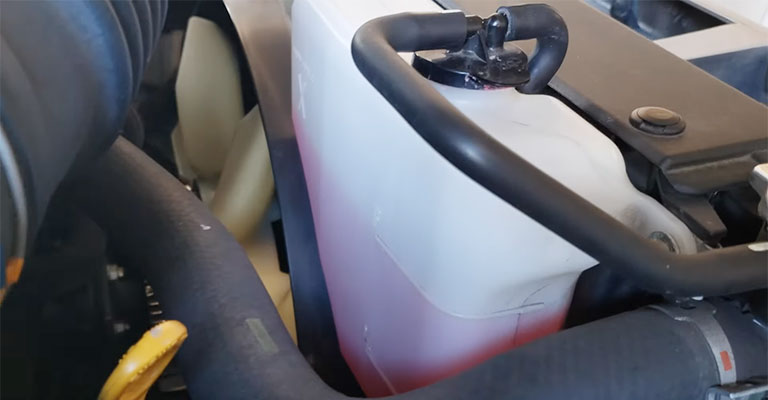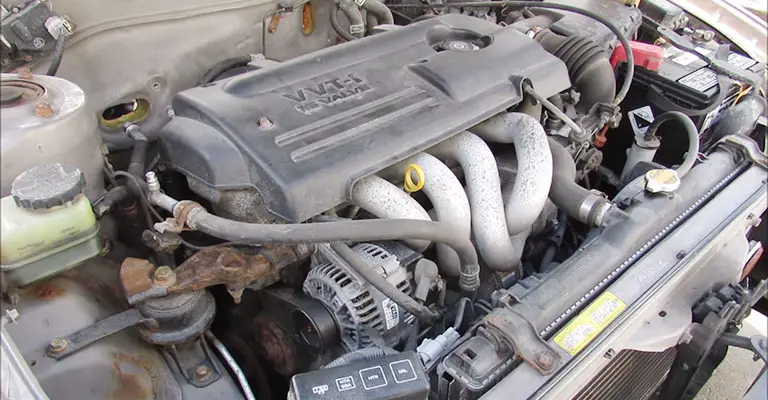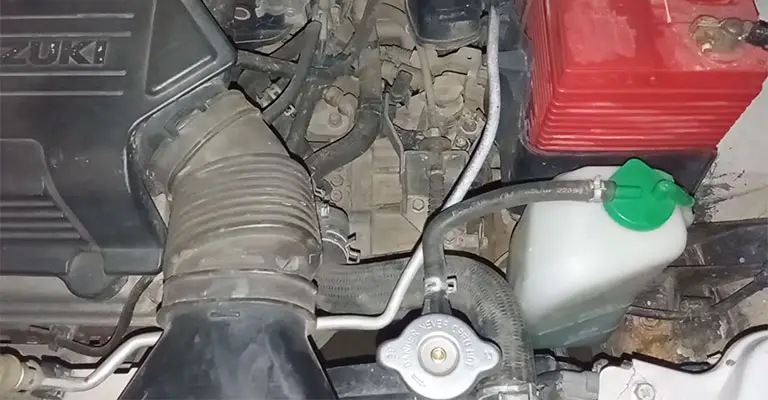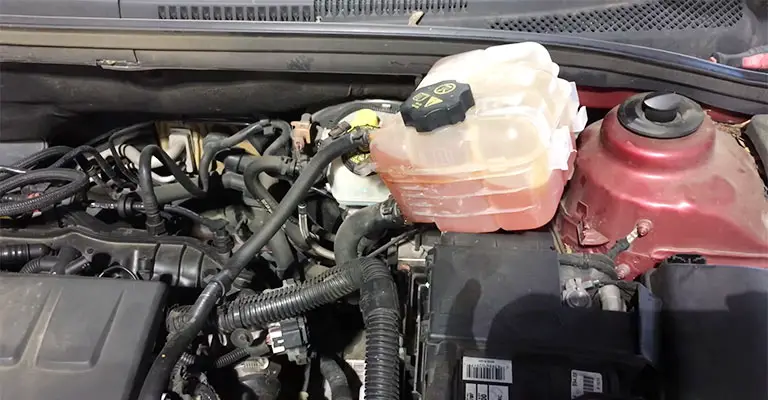The radiator will pull coolant from the reservoir when it is low on coolant. The top part of the radiator creates a vacuum due to the lack of coolant which sucks the coolant from the reservoir.
In the cooling system of a car, the reservoir keeps the radiator working to its maximum potential. Oddly enough, many vehicle owners lack proper knowledge of how a cooling system integrates its components to serve its purpose. In this article, we will deal with exactly that.

Will Radiator Pull Coolant From Reservoir?
The coolant reservoir of your vehicle plays a vital role in keeping the entire engine running flawlessly. If the reservoir tank is not working properly, it could mean disaster for your car and you will have to make an expensive trip to the auto shop.
To get a clear understanding of how a car’s radiator might pull coolant from the reservoir, we have to know about the cooling system first.
How Cooling System Works?

The intense heat produced by the engine of a car or truck is due to the ignition of fuel and air, causing small explosions inside it. This heat, if left alone, will cause huge damage to the engine and related parts.
That is where the cooling system comes from. It extracts that excess heat from the engine and prevents such damage. To do that, it uses a mixture of water and antifreeze, known as coolant. It has a high boiling point and a low freezing point.
The coolant circulates the cylinders and absorbs the heat. This latent heat causes the coolant to convert into a gas. Upon passing through a heat exchanger known as the radiator, the coolant converts back into a liquid and gets rid of that heat outside of the vehicle.
Coolant Reservoir
The coolant reservoir works to store extra coolant fluid until required. If you follow the hose from the radiator, you will easily find the reservoir. Usually, it is made of transparent plastic.
In the case of shortage, you can always add coolant to the system through the coolant reservoir. You are not supposed to feed it directly into the radiator, a common misconception that many people have.
Radiator Pulling Coolant From Reservoir

A radiator does pull coolant from the reservoir. When the radiator has a lower amount of coolant, the top part of the radiator becomes empty. Although, the bottom part will still have coolant which is nearly not enough. Despite this, the water pump will continue to suck coolant from the bottom part to cool the heated engine block.
As the amount of drawn coolant is low, the pump sucks in air which creates a vacuum inside the radiator. This suction is the exact reason why the coolant from the reservoir is drawn back into the radiator to fill it up.
How Does Coolant Get From the Reservoir to the Radiator?
The coolant reservoir works as a temporary shelter for the coolant upon expansion. The expansion of the coolant is the result of the engine being heated. The heated engine causes the radiator to have a deficiency of coolant.
When the engine cools down, that excessive heat is dispelled from the coolant. The vacuum pressure inside the radiator due to low coolant causes the coolant from the plastic reservoir tank to slip out which goes into the radiator.
Does the Radiator Take Coolant From Reservoir?

A radiator does take coolant from the reservoir when the engine is heated. When the coolant amount is low in the radiator, its top part creates a vacuum force that sucks in the coolant from the reservoir.
The correct way of adding coolant is to add it directly to the reservoir instead of the radiator. However, if you have an empty reservoir tank, you can add the coolant directly through the radiator. Although, you have to make sure you top the radiator through the reservoir.
Why is Coolant Coming Out of the Reservoir?

Overfilling the coolant reservoir can lead to serious problems. The first symptom of overflowing you will see is the pressure buildup inside the cooling system. Other possible reasons for the overflow of coolant include the radiator cap, water pump, thermostat, or radiator malfunction.
You will see two marks on the reservoir, showing the level of coolant when the engine is hot or cold respectively. The excess coolant is usually expelled through the overflow hose. Little overflow is not a big issue for the vehicle, but it is harmful to the environment.
Why is There Coolant in My Reservoir But Not in My Radiator?
You are supposed to inject coolant through the reservoir into the cooling system. It must have enough coolant to reach the top line. The extra coolant is stored in the radiator reservoir. It is used when the engine overheats and must be cooled down. If the coolant level in the reservoir is low, the entire machine will overheat and cause immeasurable damage.
Frequently Asked Questions
How do I know if my coolant is flowing?
You can easily check whether your coolant is flowing or not by looking through the radiator filter neck. At the time of starting your car, it should not be flowing because the operating temperature required to cause the thermostat to open is yet to be reached.
What causes excessive pressure in the radiator?
Leaks in the hose and the radiator itself cause excessive pressure in the system. The continuous circulation of coolant from the radiator to the engine blocks and back again creates huge pressure.
Conclusion
Surprisingly, many car owners do not know what a coolant reservoir does or its purpose. Make no mistake, it is an important part of your car’s cooling system. Always check the levels and take steps according to what the reservoir is indicating. That way you will save your car from unwanted damage.
Leave a Reply